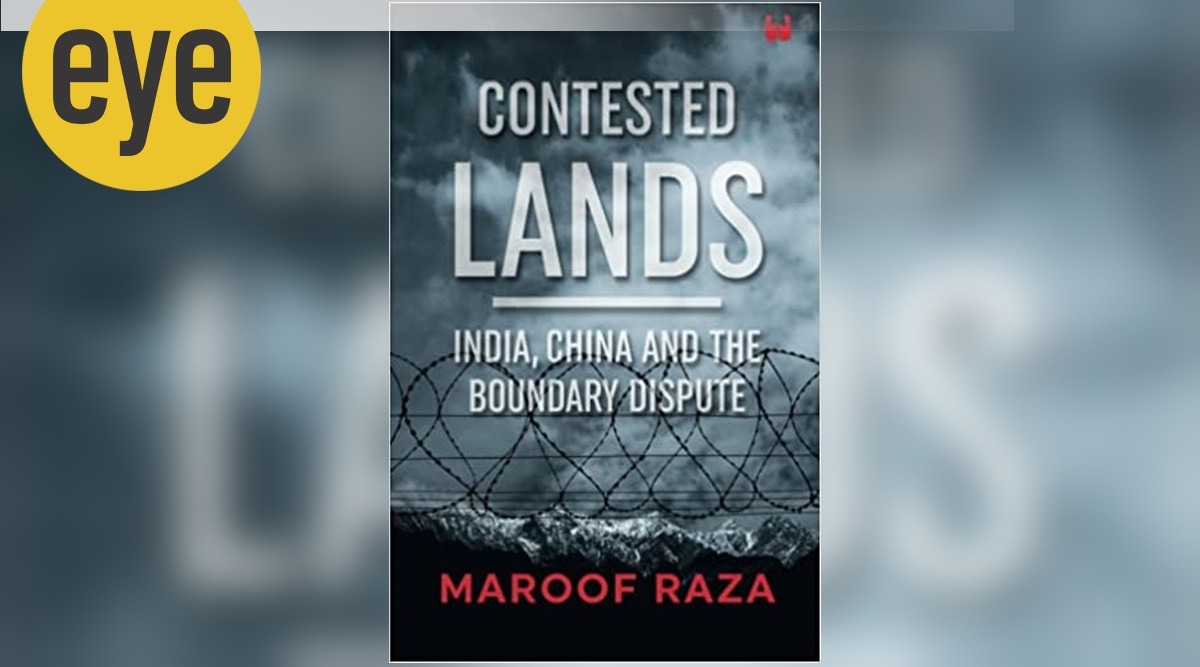March 19, 2022 12:00:02 pm
 Contested Lands: India, China and the Boundary Dispute; Maroof Raza;; Westland; 250 pages; Rs 699 (Photo: Amazon.in)
Contested Lands: India, China and the Boundary Dispute; Maroof Raza;; Westland; 250 pages; Rs 699 (Photo: Amazon.in) By Probal DasGupta
India and China are neighbours whose paths as newly independent countries have run parallel to each other since late 1940s. However, the history involving the two countries has been complex, argumentative and dramatic. Risks of a potential conflict between the two exist and their tussle will be a key arbiter of the future of the Indo-Pacific region.
In this context, Maroof Raza’s book Contested Lands is a timely book, given that the contemporary affairs involving the two neighbours is a continuation and reflection of historical dissonances. The book adopts a linear narrative that covers the genesis, course, contestations and collisions of India-China history in the 20th century. Books covering the arc of modern India-China relations have faced challenges negotiating the complex layers of events, stakeholders and disputes. Any underpinning messages in works dealing with India-China history can get submerged under a plethora of minutiae. Here, Raza keeps it lean and draws upon his versatile perspective as a strategic-affairs scholar and a former infantry officer to deliver an engaging narrative over nine crisp chapters that explain the history and their impact today.
The author identifies the issue of Tibet as a root cause of disputes between the two nations. The book explains the differences among British, Chinese and Tibetans while signing on the status of Tibet at the Simla accord in 1914 and the subsequent unresolved border. A feature of the book which stands out is its ability to ferret out interesting facts that lie within the folds of the larger narrative and leave the reader with a few searching questions. For instance, it is absurd that Tibet won its independence from China in 1913, but stayed unrecognised until Chinese forces invaded Tibet in 1950. The author points out how India chose to turn its back on Tibet in its quest to woo China. One of the lesser-known aspects is that the race for nuclear supremacy led the world’s powers to compete for uranium resources in Xinjiang. Mao eyed the bomb early on while India was evaluating the relevance of maintaining an army. Raza writes about a historical opportunity in 1949 when India missed joining the US in an anti-Communist alliance. Given the strong CIA presence in Tibet then, would such an alliance have prevented Tibet’s annexation by China in 1950?
Raza doesn’t hold back his punches and offers an unequivocal and outspoken critique as the narrative moves inevitably towards the 1962 conflict. He explains the mistakes India made during the conflict, having earlier dwelt on the growing chasm in the strategic philosophy between the two nations. The author delves into India’s leadership foibles that led to the debacle. He is critical of Prime Minister Jawaharlal Nehru’s strategic errors, which includes obfuscating the Chinese occupation of Aksai Chin in 1950s and his complete reliance on a “team of sycophants”. He is also unsparing in his criticism of defence minister VK Krishna Menon, Army chief General PN Thapar and the wartime general – Lt General Bijji Kaul. He describes in detail the decision to not use the Air Force as a major bungle in the war. While lambasting the senior army leadership during the war, Raza points out the intrepid leadership and courage of young officers and men who withstood the Chinese attacks valiantly, despite not possessing the right weapons or clothing.
After the 1962 war, the Indian army recorded redemptive victories at Nathu La and Cho La in 1967 and reversed Chinese incursions in 1987 at Sumdorung Chu followed by a standoff at Doklam in 2017. The PLA now understands well that they would be unable to prevail over the Indian army unlike earlier, which Raza explains in his SWOT analysis in the last chapter named “2020 was not 1962”. The author eschews academic analysis but explains coherently how in the mountains, the advantage lies with the defender and, hence, a Chinese attack wouldn’t succeed today against well-prepared Indian Army defences. The author rues the inability of the two sides to find a binding boundary settlement, despite many efforts. Raza lambasts the continued inability of Indian leadership to understand Chinese motivations and adopt a coherent security doctrine. In the chapter on the debacle of 1962, he explains how the political leadership dismissed the advice of Lt General Thorat and evidence of Chinese buildup before the war. He criticises a system “dominated by a politico-bureaucratic elite with limited understanding of national security challenges” and believes that the approach from the 1950s to the present is no different. Though the book covers the current issues briefly in the last chapter, it would have been interesting to read more about the author’s views on ongoing disputes.
Contested Lands is a well-researched piece of work where drama and events dot a thrilling history of the neighbourhood. It isn’t easy to bring much novelty into the subject, given the depth of literature already available. However, Raza brings a fresh, coherent perspective through a nifty approach, sharp insights and candid analysis written in spare prose. Contested Lands is an important addition to the historiography on India-China that ought to be read by policy makers, army officers, scholars and others.
Probal DasGupta writes on history and international affairs and is the author of Watershed 1967: India’s Forgotten Victory over China
- The Indian Express website has been rated GREEN for its credibility and trustworthiness by Newsguard, a global service that rates news sources for their journalistic standards.

